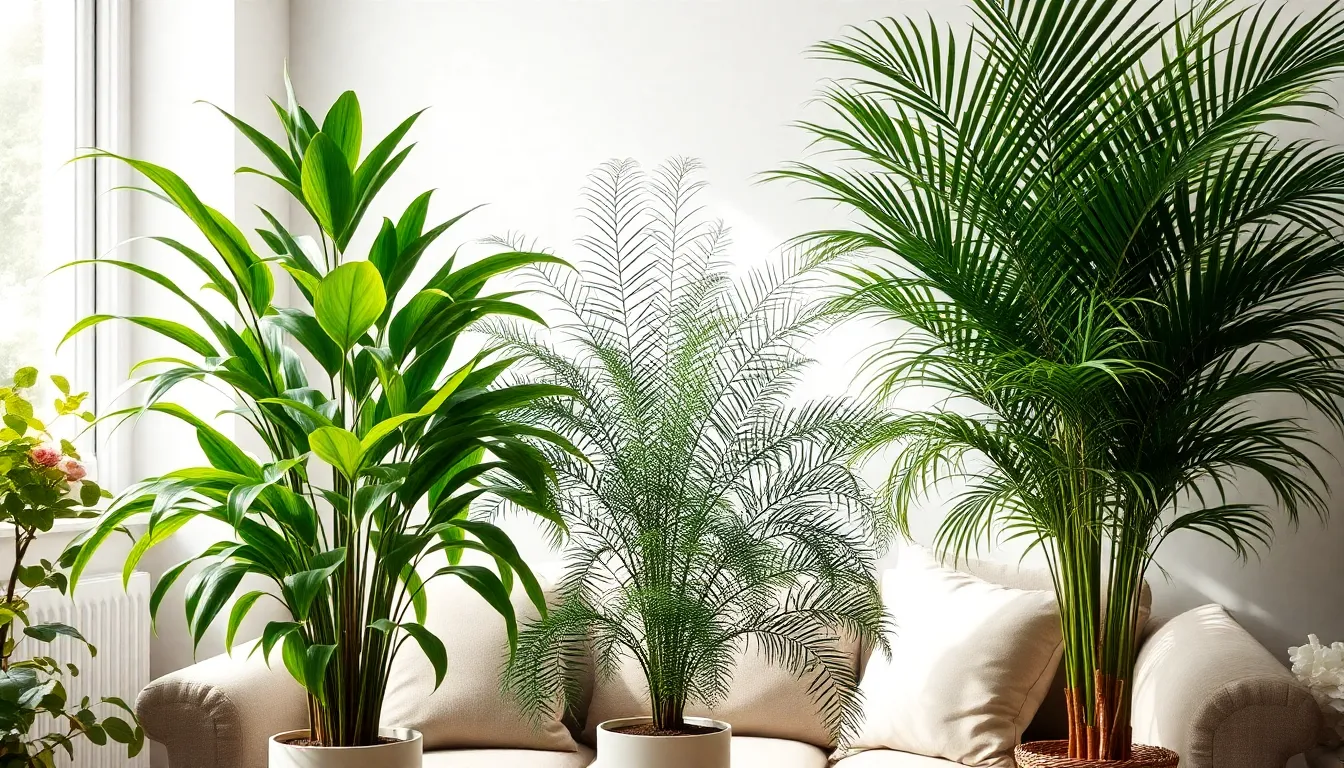
Safe Houseplants for Cats: Top Tips to Keep Your Feline Friends Healthy and Happy
Cats and houseplants often find themselves in a love-hate relationship. One moment, your feline friend is frolicking around your greenery, and the next, they’re treating your prized peace lily like a catnip-filled toy. But what if those plants could coexist peacefully without turning your home into a botanical battleground?
Safe Houseplants for Cats
Selecting safe houseplants for cats plays a crucial role in maintaining a healthy environment. Many common household plants contain toxins that can harm cats, leading to serious health issues. Choosing non-toxic options ensures the safety of feline companions while enhancing the decor of living spaces.
Pet owners benefit from knowing which plants are safe. Some popular non-toxic houseplants include spider plants, Boston ferns, and bamboo palm. These options not only provide aesthetic appeal but also improve indoor air quality.
Creating a cat-friendly home involves careful planning. Placing safe houseplants out of reach can prevent any accidental ingestion while still allowing for the beauty of greenery. Incorporating hanging plants or tall plant stands keeps them elevated, ensuring curiosity doesn’t lead to harm.
Educational resources are available for pet owners. Websites like the ASPCA provide comprehensive lists of non-toxic plants, helping individuals make informed decisions. Regularly reviewing plant safety can optimize their home’s environment for both cats and plants.
Monitoring cats’ behavior around plants contributes to safety. Cats may display interest in chewing leaves or digging in soil. Observing signs of playfulness or nibbling prompts immediate attention to any potential risks, encouraging proactive measures.
Understanding the importance of safe houseplants fosters a harmonious coexistence. By prioritizing cat-friendly plant choices, pet owners create a nurturing space. Safe plants enhance the home while protecting feline health and wellbeing.
Popular Safe Houseplants For Cats

Selecting safe plants ensures both the cat’s well-being and the enjoyment of greenery in the home. Here are three popular choices that provide aesthetic value while being non-toxic.
Spider Plant
Spider plants thrive in a variety of conditions, making them an ideal choice for pet owners. These hardy plants resist neglect and adapt easily to indoor environments. With their arching green leaves and occasional white flowers, they add a vibrant touch to any room. Cats often enjoy nibbling on the leaves, which is harmless. Furthermore, spider plants effectively filter indoor air, improving overall home quality.
Boston Fern
Boston ferns flourish in humid environments, perfect for bathrooms or kitchens. Their lush, feathery fronds create a serene atmosphere. Apart from their beauty, these ferns are safe for cats, eliminating concerns about toxic reactions. They require consistent moisture and indirect light, but their ability to remove indoor pollutants makes them a valuable addition. Additionally, their natural ability to humidify indoor spaces can enhance feline comfort during dry seasons.
Areca Palm
Areca palms bring a tropical feel to any indoor space with their tall, feathery fronds. These palms thrive in bright, indirect sunlight and prefer moderate humidity. Safe for cats, both pet owners and animals can coexist without hazards. Areca palms also serve as effective air purifiers, providing clean oxygen and improving indoor air quality. Their aesthetic appeal, combined with their safety for pets, makes them a popular houseplant choice.
Care Tips For Houseplants Around Cats
Place houseplants strategically to ensure cats can’t access them. Using elevated plant stands or hanging pots keeps plants out of reach. Monitor any curious behavior; this allows identification of interest before it leads to risks.
Select non-toxic plants like spider plants, Boston ferns, and Areca palms, known to be safe for cats. These species thrive in various conditions while being visually appealing. Provide proper care based on specific plant needs; light requirements and watering schedules differ among varieties.
Incorporate cat-friendly soil and avoid toxic fertilizers. Organic options are often safer for pets and provide necessary nutrients. Regularly inspect plants for pests and diseases; controlling these issues prevents potential hazards for cats.
Consider providing cat grass as an alternative. This satisfies a cat’s natural urge to chew on plants without the risks associated with non-safe varieties. With careful planning and selection, cultivating a green home can enhance the lives of both pets and plants.
Use designated areas for houseplants to maintain organization and safety. Grouping plants aids in monitoring their condition together. Engage with local resources for additional care tips and to ensure plants are appropriate for pets.
Conclusion
Creating a safe and harmonious environment for both cats and houseplants is achievable with careful planning. By selecting non-toxic plants like spider plants and Boston ferns, pet owners can enjoy the beauty of greenery without compromising their feline friends’ health.
Strategic placement and monitoring of cats’ interactions with plants are essential steps in preventing any accidents. Offering alternatives like cat grass can also satisfy their natural instincts while keeping them away from harmful varieties.
With the right choices and practices, a pet-friendly home can thrive, benefiting both the plants and the playful cats that inhabit it.
